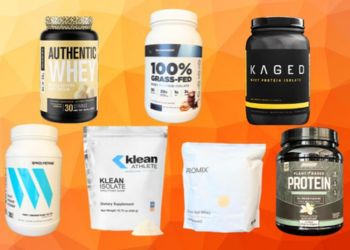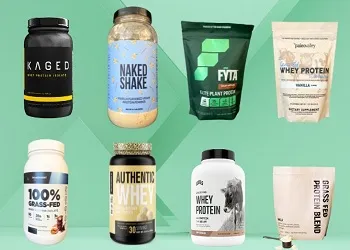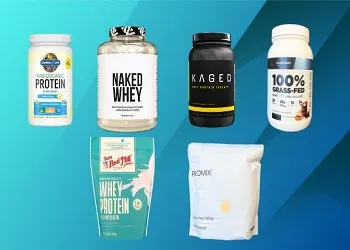Pick up any packaged food in Canada, look at the back, and you’ll see a nutrition label. It’s packed with information, but what does it all mean? And why do you need to understand it?
A food label won’t tell you how yummy something will be, unfortunately. But it will break down its nutrient values so you can make informed food choices. Selecting the optimal foods for your body composition is one of the stepping stones to living a healthier life. Combine these prime diet choices with personal training, and you’ll see sustainable results.
This article will discuss what’s on a nutrition label, give you a rundown of the essential items on a nutrition label, and provide some guidelines for making healthier diet choices. Grab your notebook, and let’s learn how to read a nutrition label today!
Table of Contents
The Basics – How to Read a Nutrition Label
Fortunately for health enthusiasts, nutrition labelling has been a law in Canada since December 12, 2007. The labels must include the nutrition facts table, ingredient list, and optional nutrition claims.
Every nutrition label will include a food’s calories per serving, 13 core nutrients, and the percentage of daily value (DV). We’ve listed the essentials below, and we’ll explain how to decipher the information, what to look for, and what you should try to avoid.
Serving Size
The serving size is the first thing you should check on a food label, as all the nutrient percentages listed are true for that serving size. It’s a guideline for how much of a product you should consume as part of your diet, and following the serving sizes helps you track your food intake.
For example, a bag of steel-cut oats may have a serving size of 1/2 cup, which provides a decent amount of carbohydrates without overdoing it. Whereas a bottle of extra-virgin olive oil, a calorie-dense item, may have a serving size of 1 tablespoon. Pay attention to the serving size as you read through the rest of the label.
% of Daily Value (DV)
This column indicates whether a food has less or more of a particular nutrient. But it’s not a perfect science. The figures are based on a diet of 2,000 calories per day, so use them to guide your choices rather than strictly adhering to them.
- 5% or less DV means it has a lower nutrient value
- 15% or more DV means it has more nutrient value
When comparing products to make a healthier choice, aim for foods with low to no sugar or trans fat. Also, check the fibre per serving and aim for 2 grams and above.

Calories
Ah, calories — a word with so many connotations that some people fear it. Let’s bust this myth. In essence, a calorie is a unit of energy, and humans (and animals) need them to survive. The term “empty calories,” however, refers to foods with little to no nutritional value, and consuming an excessive amount of empty calories could negatively impact your health.
So, what should you look for on the nutrition label? This will depend on your daily recommended intake and the nutrient content of the food.
Let’s look at two fictional examples for an afternoon snack.
- A bag of pistachios has a serving size of 50 grams (about 4 tablespoons) with 280 calories. That seems like a lot for a small serving. But, in that portion, there are 12 grams of protein, 12 grams of complex carbohydrates (3 grams of sugar), and 20 grams of unsaturated fat, which makes these pistachios a good source of nutrients. (Hot tip: all nuts have high fat content, so make sure you adjust your other meals and snacks to avoid exceeding your daily fat intake allowance).
- A packaged muffin has a serving size of 113 grams (a medium muffin) with 426 calories. More calories than the pistachios but not as nutrient-dense. The muffin has 18 grams of total fat, 61 grams of carbohydrates (37 grams of sugar), and only 5 grams of protein.
Short story long, you want to look for lower-calorie foods with higher nutrient density.
Protein
We love protein, and so should you. Why? They keep you feeling fuller than fats and carbs and they’re essential for increasing and maintaining muscle mass, to name a couple of reasons.
On nutrition labels in Canada, the protein doesn’t have a corresponding % DV, only the grams. The percentage of protein intake varies by person, so there’s no hard-and-fast rule established for a daily amount.
Use EverFlex’s protein requirements calculator to determine how many grams of protein you need per day and per meal.
Protein Requirements Calculator
Carbohydrates
Carbohydrates could have an entire blog post dedicated to them, so we’ll try to keep this simple, not complex. 😉
The carbohydrates on a food label will break down into fibre, starch, and sugar, although starch is not a listing requirement. Carbohydrates in the form of sugar are easily digestible and get processed in the body as a “simple carbs,” providing quick fuel to your brain and body. Fibre and starch are “complex carbs,” which are non-digestible. Having fibre in your diet is essential for your health as it keeps your systems operating smoothly.
Healthier prepackaged foods (is that an oxymoron?) will have low or no sugar and at least 2 grams of fibre per serving.
Fat
Fat is another word that freaks people out when it comes to diet, gaining its bad rap from decades of misinformation. It’s important to note that there is not just one kind of fat — it comes in many forms, some “good,” some “bad.”
- “Good” fats: polyunsaturated fat and monounsaturated fat
- “Bad” fats: trans fat and saturated fats have been linked to increased risk of heart disease
A nutrition label will not indicate the amounts of unsaturated fats but instead provide the total fat content with the saturated and trans fat amounts listed. Based on the breakdown, it stands to reason that healthier options don’t contain any saturated or trans fats. So look for a reasonable amount of unsaturated fats based on your dietary needs.
Ingredient List
This list will follow the nutrition fact table on the food label and lists the food’s contents from most to least. A great principle to follow for clean eating and health choices: the simpler the ingredient list, the better — and you should be able to pronounce the words you see.
If You Have Allergies
You probably already read ingredient lists if you’re allergic to certain foods. But, just as a reminder, anyone with food intolerances or allergies should always read the labels to avoid ingesting something that may upset your system. Ingredient lists can include surprising things, like shellfish in pre-workout supplements and wheat gluten in soy sauce.
Takeaways
Switching to healthier habits includes reading food labels on all your packaged products. Once you know more about nutrition and how it affects your body, reading the nutrition information will become second nature — you’ll want to know what you’re eating. Taking an extra minute or so to look at the back of a package can make all the difference in helping you make healthier food choices.
Part of your EverFlex experience includes nutrition coaching tailored to your needs. If you’re already a label-reading pro, we offer supplemental resources. Or, if you’re starting your nutrition journey with us, we can connect you with a meal plan service, offer meal plan recipes, and keep you on track with accountability reminders. Get in touch with us to pivot your lifestyle towards a healthier track.














